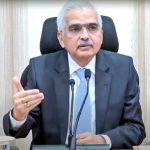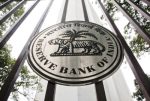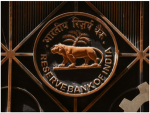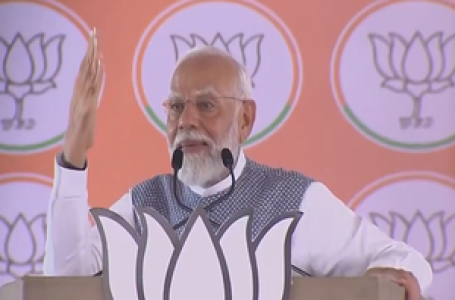By Shivaji Sarkar
July 15, 2019
New Delhi: The stock market is continuously crashing for a week. This is a complex phenomenon as it is just not the Budget blues but several other factors are affecting the market. The Budget proposal may have accentuated it.
Certainly, the Economic Survey prediction of 7% growth had given a minor boost to the sensex. It rose by 68.81 points to 39,908.06 and Nifty was up by 21.20 points at 11,938. But it started falling as the Budget was presented.
In a week Nifty ended below 11500, the lowest since 17 May and the sensex came down to around 38800. In fact, the stock has been moving in a narrow range since January.
Notably, the issues were many and the foreign portfolio investors (FPI) have been lukewarm to the Indian market. They appeared to take more out of the country. Retail inflation also reached an eight-month high in June on rising food prices but stayed under the Reserve Bank of India’s medium-term target of 4% for an eleventh straight month.
Global cues traded mixed as worries over renewed Sino-US trade tensions weighed on sentiment ahead of the release of June trade data from China.
Importantly, certain tax proposals and denial of the benefit of tax waiver up to Rs 5 lakh to all classes of taxpayers has also subdued the market sentiments. Besides, proposing higher taxes on certain classes though with a view to increasing revenue has also dampened market sentiments.
Further, the Government’s move to tax share buybacks, impose higher taxes on the super-rich and increase minimum public shareholding in listed companies has disappointed investors.
The long-term capital gain tax (LTCG) has increased for FPIs, because of a few tweaks, which is one thing that the market did not like. Buyback tax and the plan to increase in public shareholdings after some years are a few other reasons which hit the market badly, according to AK Prabhakar, Head of Research, IDBI Capital Markets.
The sentiments of railways, its investments and lack of clarity on its expansion and part privatization seem to have confused the market. As its investments in many areas has come down.
The FPIs pulled nearly $ 11.3 billion from the country’s debt and equity markets in 2018, the highest since 2008.
The NSDL data show that as of 3 January, the limit for FPI investments in corporate bonds is Rs 2.89 lakh crores and the utilised level is 71.14%. Even after the Central Bank eased norms for investing in debt, in April 2018, foreign investors trimmed their holdings in G-secs and corporate bonds in April, May and June.
On the external front, the current account deficit (CAD) increased from 1.9% of GDP in 2017-18 to 2.6% in April-December 2018. The widening of the CAD was largely on account of a higher trade deficit driven by rise in international crude oil prices (Indian basket).
The trade deficit increased from US$ 162.1 billion in 2017-18 to $ 184 billion 2018-19. Merchandise imports reduced from 21.1% to 10.4%. The growth in service exports and imports in US dollar terms declined to 5.5% and 6.7% respectively in 2018-19, from 18.8% and 22.6% respectively in 2017-18.
The rupee depreciated by 7.8% vis-à-vis the dollar, 7.7% against the Yen, and 6.8% against the Euro and Pound Sterling in 2018-19. During 2018-19, the Indian rupee traded with a depreciating trend against the US dollar and touched Rs. 74.4 per US dollar in October 2018 before recovering to Rs. 69.2 per US dollar at the end of March 2019.
The weaker rupee nominal rise in exports and balance of trade position has made bonds less attractive for investors apart from sentiments about the domestic market.
The Budget has proposed an increase in the surcharge on high-income earning foreign individuals and associations of persons (AoPs). A large number of FPIs in India will be impacted as they are structured either as trusts or AoPs. This is causing another problem now.
Foreign investors withdrew a net sum of Rs 475 crores from the Indian capital markets in the first week of July. The reasons stated were pre-Budget anticipation and international trade tension because of steps taken by US President Donald Trump.
Undeniably, the overall economic condition is impacting the mood. Now the market is looking at the RBI as also the US Federal Reserve for a rate cut.
The visit of US Secretary of State Mike Pompeo and his discussion with Prime Minister Modi on trade and strategic relationship has raised expectations of the market.
Another issue that has not been taken kindly is the announcement of higher dividend to be paid by the RBI. Finance Secretary Subhash Garg said that close to Rs 90,000 crores will come as dividend from the RBI. This is a 32% jump from the previous fiscal, when the Central Bank paid Rs 68,000 crores to the Government including Rs 28,000 crores as interim dividend.
The RBI dividend in 2017-18 was Rs 40,659 crore.
The bank industry also has reservation over drawing this kind of money from the Central Bank.
In fact, the Central Bank set up a panel under former RBI Governor Bimal Jalan in December 2018 to look into the size of capital reserves that the Bank should hold. This committee is to submit its report on next week, July 16.
The recapitalisation of banks by about Rs 1 lakh crore should rejuvenate the banks though it would cover only 10% of its losses. Meanwhile, certain restructuring and amalgamation of public sector banks is considered a positive step. Better recoveries of loans are yet another positive.
The NBFC sector is having liquidity crisis and the resultant slowdown. The RBI Act is proposed to be amended for allowing intervention of the Central Bank with powers to remove its directors.
However, these steps are sequel to one of the worst crisis of the Rs 91,000 crores IL&FS scam. Its tentacles have increased and has also exposed the vulnerabilities of the National Highway Authority and raised questions about their toll fund management.
Myriad issues are making the industry go into a tizzy. The Budget has suggested certain methods but these will show results in a bit longer term. The stock market only exhibits the mood. A favourable trend boosts the confidence. Till such time the equity market may continue to cause jitters. —- INFA


















